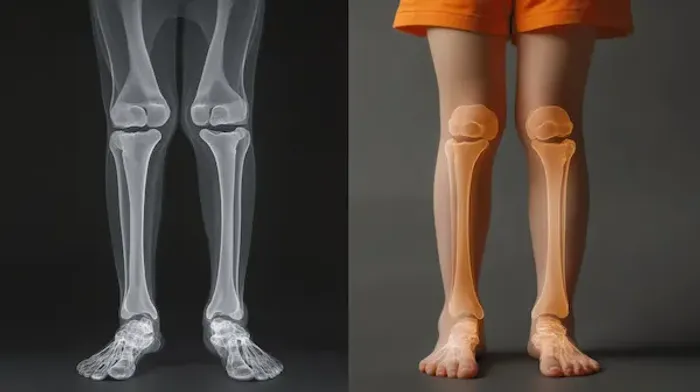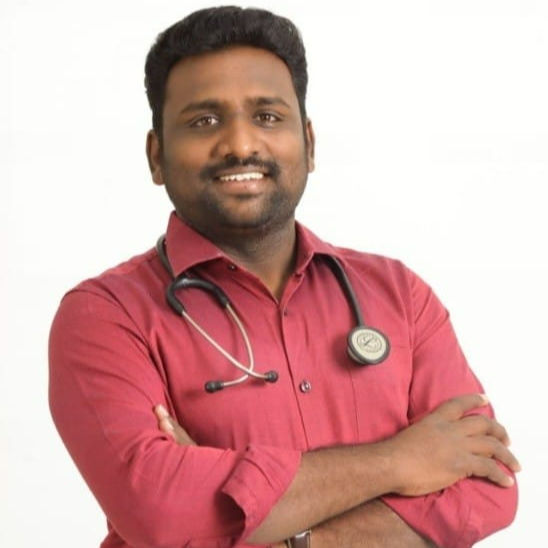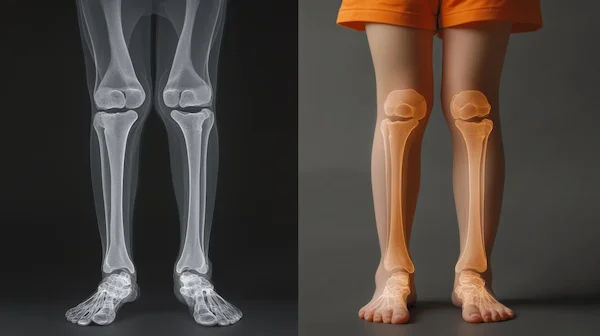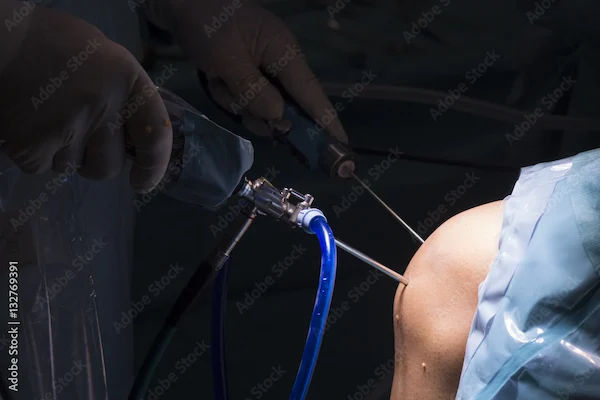Guide to Knock Knees
Understand knock knees (genu valgum), including causes, symptoms, self-checks, treatment options for children and adults, exercises, surgery, and bone health tips.


Introduction
Knock knees—also called genu valgum—describe a leg alignment where the knees angle inward and touch while the ankles remain apart. For many toddlers and preschoolers, knock knees are a normal part of growth that usually straighten on their own. For older children, teens, or adults, however, knock knees can sometimes signal an underlying issue, cause knee pain, or increase the risk of joint problems over time. If you’re a parent noticing your child’s leg shape or an adult wondering whether your knock knees need attention, this guide brings clarity.
In this comprehensive guide, you’ll learn what knock knees are, what’s normal by age, and simple self-checks you can do at home. We’ll unpack common causes in kids and adults, how doctors diagnose the condition, and evidence-based treatments—from watchful waiting and exercises to guided growth and osteotomy surgery when needed. You’ll also find practical tips for daily life, sports, and footwear, plus how to support bone health. Wherever you are in your journey, this step-by-step overview will help you make informed choices and know when it’s time to consult a professional.
What Are Knock Knees (Genu Valgum)?
Knock knees, medically termed genu valgum, occur when the knees tilt inward so that they touch or nearly touch while the ankles stay separated. In simple alignment terms, the thigh bone (femur) and shin bone (tibia) form a valgus (inward) angle at the knee. A small valgus angle is normal in adults; knock knees refers to a more pronounced inward angle that alters leg alignment and, potentially, load distribution across the knee joint.
Comparing knock knees with bowed legs (genu varum) helps situate the condition in normal development. Many children progress from mild bowing as toddlers to a brief phase of knock knees in preschool years and then naturally move toward straighter legs by early school age. The term “physiologic” genu valgum describes this normal, transient phase. In contrast, “pathologic” knock knees persist beyond expected ages, are unusually severe, occur only on one side, or arise from an underlying problem such as rickets, prior injury, or arthritis.
Alignment affects how forces travel through your knees. Pronounced knock knees may shift load to the outer (lateral) compartment of the knee, contributing to pain or, over years, joint wear. In children, most cases are harmless and self-correct; in adults, persistent or worsening knock knees may require targeted therapy or, in some cases, surgery to realign the limb and protect joint health.
What’s Normal and What’s Not by Age
During normal growth, children’s leg alignment changes predictably. After infancy’s bowed legs (varum), the alignment
typically progresses to a mild knock-kneed (valgum) phase around ages 2 to 4, often peaking near ages 3 to 4. By about age 7 to 8, most children approach a more neutral alignment, although a small amount of valgus remains normal. Most preschool-aged knock knees do not need treatment and resolve with time.
Red flags that suggest something other than physiologic knock knees include:
- Onset before age 2 or persistence beyond age 7–8 without improvement
- Severe asymmetry (one leg appears much more angled)
- One-sided deformity after injury or infection
- Pain that limits activity, frequent tripping, or gait problems
- Short stature or delayed growth
- Signs of nutritional deficiency (e.g., bone tenderness, frequent fractures)
Quick timeline:
- Ages 1–2: Mild bowing often still present
- Ages 2–4: Knock knees commonly appear; typically mild to moderate
- Ages 5–7: Gradual straightening
- After 7–8: Mild valgus is normal; substantial knock knees warrant evaluation
Parents often worry that physical activities or sitting postures cause knock knees; generally, they do not. Instead, genetics, growth patterns, and sometimes nutrition play larger roles. When in doubt, especially if pain or functional issues are present, a clinical evaluation can differentiate normal from pathologic alignment and guide next steps.
Consult Top Specialists Here
Signs, Symptoms, and Simple Self-Checks
Common signs of knock knees include knees that come together while ankles stay apart and a gait that may look a bit inward-angled. Some people have no symptoms. Others notice:
- Knee or lateral (outer) joint pain after activity
- Easily tripping or “knocking” the knees during running
- Fatigue or achiness with prolonged walking or standing
- Uneven shoe wear, often more on the inside edge
Easy self-checks:
- Intermalleolar distance (IMD): Stand with knees gently touching and feet pointing forward. Measure the distance between the inner ankles (medial malleoli). Larger distances suggest more valgus.
- Alignment line photo: In snug clothing, take a photo from the front, feet hip-width apart, knees fully extended. A straight line from hip through knee to ankle should roughly align. Noticeable inward deviation suggests valgus.
- Functional screen: Do a bodyweight squat in front of a mirror. Knees collapsing inward (dynamic valgus) may indicate hip/gluteal weakness even if static alignment is modestly knock-kneed.
Pain, swelling, or instability should prompt evaluation. In adults, persistent lateral knee pain or progressive deformity can signal underlying cartilage wear or arthritis. For parents: if your child’s knock knees interfere with running or play—or look markedly worse than peers—discuss it with a pediatrician or orthopaedist. If symptoms persist beyond two weeks or interfere with daily activity, consult a doctor online for further evaluation.
Causes and Risk Factors Across Ages
Here are the causes and risk factors:
Pediatric causes:
- Physiologic genu valgum: The most common cause in children, peaking around ages 3–4 and resolving by 7–8 without
treatment - Nutritional rickets (vitamin D deficiency): Soft, weakened bones may bow or valgus; correction requires vitamin D/calcium and diet guidance
- Skeletal dysplasias and genetic conditions: Less common; often associated with short stature and other features
Teens and adults:
- Post-traumatic deformity: Malaligned healing after fractures near the knee or growth plate injuries
- Arthritis: Lateral compartment osteoarthritis can both result from and worsen valgus alignment
- Obesity: Higher body weight increases knee load
Previous surgeries: Procedures altering bone or joint alignment can lead to valgus
Bilateral vs unilateral differences matter. Bilateral, symmetric knock knees in young children are often physiologic; unilateral or asymmetric cases more often suggest structural or pathologic causes and merit imaging. Family history and growth patterns also help clinicians distinguish normal variation from disease. As a rule of thumb, worsening alignment, pain, or functional limits at any age is a sign to seek evaluation.
Diagnosis: How Doctors Evaluate Knock Knees
Doctors start with a detailed history—age of onset, progression, pain, tripping, injuries, family patterns, nutrition—and
a physical exam evaluating alignment, gait, hip/knee range of motion, and leg length. They may measure intermalleolar distance and assess for dynamic valgus during squat or single-leg tasks.
Imaging is not always necessary in young children with typical, symmetric, painless knock knees that fit expected age norms. When used, standing long-leg X-rays help quantify alignment and joint line angles, assess bone growth plates, and identify leg-length differences or focal deformities.
Laboratory tests are reserved for suspected metabolic or nutritional causes. If rickets is a concern, tests may include vitamin D, calcium, phosphorus, and alkaline phosphatase. Home collection services can be helpful when evaluating bone health and broader metabolic risk. Based on findings, clinicians choose between observation, physical therapy, nutritional support, bracing for comfort, or surgical options for structural realignment.
Treatment in Children: From Observation to Guided Growth
Most children with knock knees do not need treatment. Observation—with check-ins every 6–12 months—is typical when alignment fits the normal developmental curve and the child has no pain or functional problems.
Nutrition and bone health are essential. Where vitamin D deficiency is suspected, supplementation and dietary
improvements are crucial, sometimes alongside sunlight exposure guidance. Correcting rickets can significantly improve
bone strength and alignment potential.
Bracing and orthotics are not routinely used to “correct” bone alignment in physiologic cases. Physical therapy can help address coordination, balance, and strength for kids who trip or fatigue easily, even though PT won’t remodel bone alignment on its own.
Guided growth (hemiepiphysiodesis) is a minimally invasive surgery considered for persistent, progressive knock knees
in older children and adolescents who still have growth remaining. A small plate temporarily “tethers” growth on one side of the growth plate, allowing the other side to catch up and straighten the limb over time. Once corrected, the
hardware is removed. This approach can be highly effective when timed correctly relative to remaining growth. If your child’s condition does not improve after observation and targeted care, book a physical visit to a pediatric orthopaedist.
Treatment in Adults: Conservative Care to Osteotomy
Adult management aims to reduce pain, improve function, and—when appropriate—correct alignment. Conservative care often includes:
- Physical therapy: Strengthening the hip abductors, external rotators, quads, and core reduces dynamic valgus during
activity - Weight management: Reduces knee joint load and may lessen pain
- Braces/orthoses: Unloader braces can shift some load away from the painful side
- Footwear: Cushioned, supportive shoes can improve comfort
When symptoms persist and valgus is significant, osteotomy may be considered. In adults with distal femoral valgus, a distal femoral osteotomy reorients the femur to a more neutral mechanical axis, aiming to reduce lateral compartment overload and pain. Total knee replacement may be considered in older adults with advanced arthritis. If pain limits daily life despite conservative care, consult a doctor online for referral and imaging coordination.
Exercises and Home Programs: What Helps
Exercises cannot change bone shape in adults and are unlikely to permanently alter structural alignment in children.
However, a well-designed program can reduce dynamic valgus, improve comfort, and enhance performance.
Evidence-informed routine: Side-lying leg raises, clamshells, banded lateral walks, wall sits, mini-squats, bridges, single-
leg stance progressions, step-downs, and controlled lunges. Flexibility: calf, hamstring, and hip flexor stretches.
Exercises improve mechanics, symptom relief, and function; they do not reshape bones. Braces and insoles may aid comfort but will not remodel bone alignment. Start 2–3 sessions weekly; emphasize quality movement over heavy load.
Track progress with self-checks (mirror squat form, reduced knee soreness, improved step-down control). Consult a physiotherapist if pain persists.
Surgery:
Procedures, Risks, Recovery, and Results
- Guided growth (children/adolescents): Gradual correction via temporary plate; recovery occurs during growth.
- Osteotomy (adults/adolescents): Controlled bone cut to improve alignment; requires protected weight-bearing and rehab.
Risks: Infection, blood clots, nerve/vascular injury, delayed healing, over-/under-correction, hardware irritation.
Recovery: months; return to sport depends on healing and strength. Discuss realistic goals with your surgeon.
Consult Top Specialists Here
Living Well with Knock Knees
- Sports: Children can play all; adults choose knee-friendly activities
- Shoes/insoles: Comfortable, supportive footwear; braces for symptomatic knees
- Work/daily life: Alternate sitting/standing; microbreaks
- Mental health: Address body-image concerns; set realistic expectations
If activity modifications, supportive footwear, and a focused exercise plan don’t ease symptoms, consult a doctor online to plan next steps.
Prevention and Bone Health Essentials
- Nutrition: Vitamin D and calcium
- Healthy weight: Reduces knee load
- Regular activity: Weight-bearing exercise, strength, balance
- Monitor growth: Routine check-ups for children; evaluate if alignment is severe, asymmetric, or painful
Consult Top Specialists Here

Dr. Anil Pradeep Jadhav
Orthopaedician
23 Years • MBBS MS (Ortho)
Nashik
Apollo Hospitals Nashik, Nashik
(25+ Patients)
Dr. Anil Sharma
Orthopaedician
42 Years • MBBS, MS Orthopedics
New Delhi
AAKASH MEDSQUARE, New Delhi
Dr. Vamsi Krishna Reddy
Orthopaedician
6 Years • MBBS, M.S.Orthopaedics
Guntur
Sri Krishna Orthopedic And Dental Hospital, Guntur

Dr. Manoj Dinkar
Orthopaedician
15 Years • MBBS, Dip (Orthopaedics)
New Delhi
THE DOCTORS NESST, New Delhi

Dr. Pradeep Lucas
Orthopaedician
7 Years • MBBS, Diploma in Orthopaedics, Fellowship in DFSI
Bengaluru
Revival Multispeciality Clinic, Bengaluru
Consult Top Specialists Here

Dr. Anil Pradeep Jadhav
Orthopaedician
23 Years • MBBS MS (Ortho)
Nashik
Apollo Hospitals Nashik, Nashik
(25+ Patients)
Dr. Anil Sharma
Orthopaedician
42 Years • MBBS, MS Orthopedics
New Delhi
AAKASH MEDSQUARE, New Delhi
Dr. Vamsi Krishna Reddy
Orthopaedician
6 Years • MBBS, M.S.Orthopaedics
Guntur
Sri Krishna Orthopedic And Dental Hospital, Guntur

Dr. Manoj Dinkar
Orthopaedician
15 Years • MBBS, Dip (Orthopaedics)
New Delhi
THE DOCTORS NESST, New Delhi

Dr. Pradeep Lucas
Orthopaedician
7 Years • MBBS, Diploma in Orthopaedics, Fellowship in DFSI
Bengaluru
Revival Multispeciality Clinic, Bengaluru
More articles from Knock Knees
Frequently Asked Questions
Are knock knees normal in toddlers?
Yes, ages 2–4 often show mild/moderate knock knees; usually resolve by 7–8. Seek care if severe, asymmetric, or painful.
Can exercises fix knock knees permanently?
No, exercises reduce pain and improve knee tracking. Structural correction may require guided growth or osteotomy.
Do braces or insoles correct knock knees?
Rarely; they may improve comfort/function as part of a broader plan.
When should I see a doctor for knock knees?
Persistent pain, worsening alignment, asymmetry, or functional issues. Apollo 24|7 online consult can help plan imaging/referrals.
Can vitamin D deficiency cause knock knees?
Yes, rickets may lead to valgus. Testing and supplementation are important; home collection is available via Apollo 24|7.



